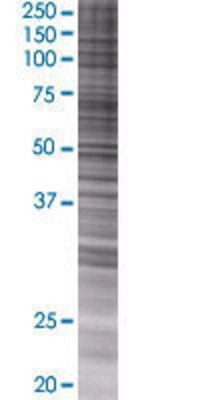| Gene Symbol |
ASNA1
|
| Entrez Gene |
439
|
| Alt Symbol |
ARSA-I, ARSA1, ASNA-I, GET3, TRC40, hASNA-I
|
| Species |
Human
|
| Gene Type |
protein-coding
|
| Description |
arsA arsenite transporter, ATP-binding, homolog 1 (bacterial)
|
| Other Description |
ATPase ASNA1|golgi to ER traffic 3 homolog|transmembrane domain recognition complex 40 kDa ATPase subunit|transmembrane domain recognition complex, 40kDa
|
| Swissprots |
O43681 A6NHP8 Q53FC6 A8K740 Q92849
|
| Accessions |
AAP45050 EAW84303 O43681 AF047469 AAC03551 AK223363 BAD97083 AK291855 BAF84544 AK293588 BAG57056 BC002651 AAH02651 BG426136 JF432148 ADZ15365 U60276 AAC50731 NM_004317 NP_004308
|
| Function |
ATPase required for the post-translational delivery of tail-anchored (TA) proteins to the endoplasmic reticulum. Recognizes and selectively binds the transmembrane domain of TA proteins in the cytosol. This complex then targets to the endoplasmic reticulum by membrane-bound receptors, where the tail- anchored protein is released for insertion. This process is regulated by ATP binding and hydrolysis. ATP binding drives the homodimer towards the closed dimer state, facilitating recognition of newly synthesized TA membrane proteins. ATP hydrolysis is required for insertion. Subsequently, the homodimer reverts towards the open dimer state, lowering its affinity for the membrane-bound receptor, and returning it to the cytosol to initiate a new round of targeting (By similarity). May be involved in insulin signaling. {ECO:0000255|HAMAP-Rule:MF_03112, ECO:0000269|PubMed:17382883, ECO:0000269|PubMed:18477612}.
|
| Subcellular Location |
Cytoplasm. Endoplasmic reticulum. Nucleus, nucleolus.
|
| Tissue Specificity |
Expressed in the epithelial cells of the liver, kidney, and stomach wall, in the adrenal medulla, in the islet cells of the pancreas, in the red pulp of the spleen, and in cardiac and skeletal muscle. {ECO:0000269|PubMed:9774623}.
|


![Western Blot: ASNA1 Overexpression Lysate (Adult Normal) [NBP2-07880] Left-Empty vector transfected control cell lysate (HEK293 cell lysate); Right -Over-expression Lysate for ASNA1.](http://www.bioprodhub.com/system/product_images/cel_products/5/sub_2/4202_ASNA1%2520Overexpression%2520Lysate%2520(Adult%2520Normal)-Western%2520Blot-NBP2-07880-img0001.jpg)